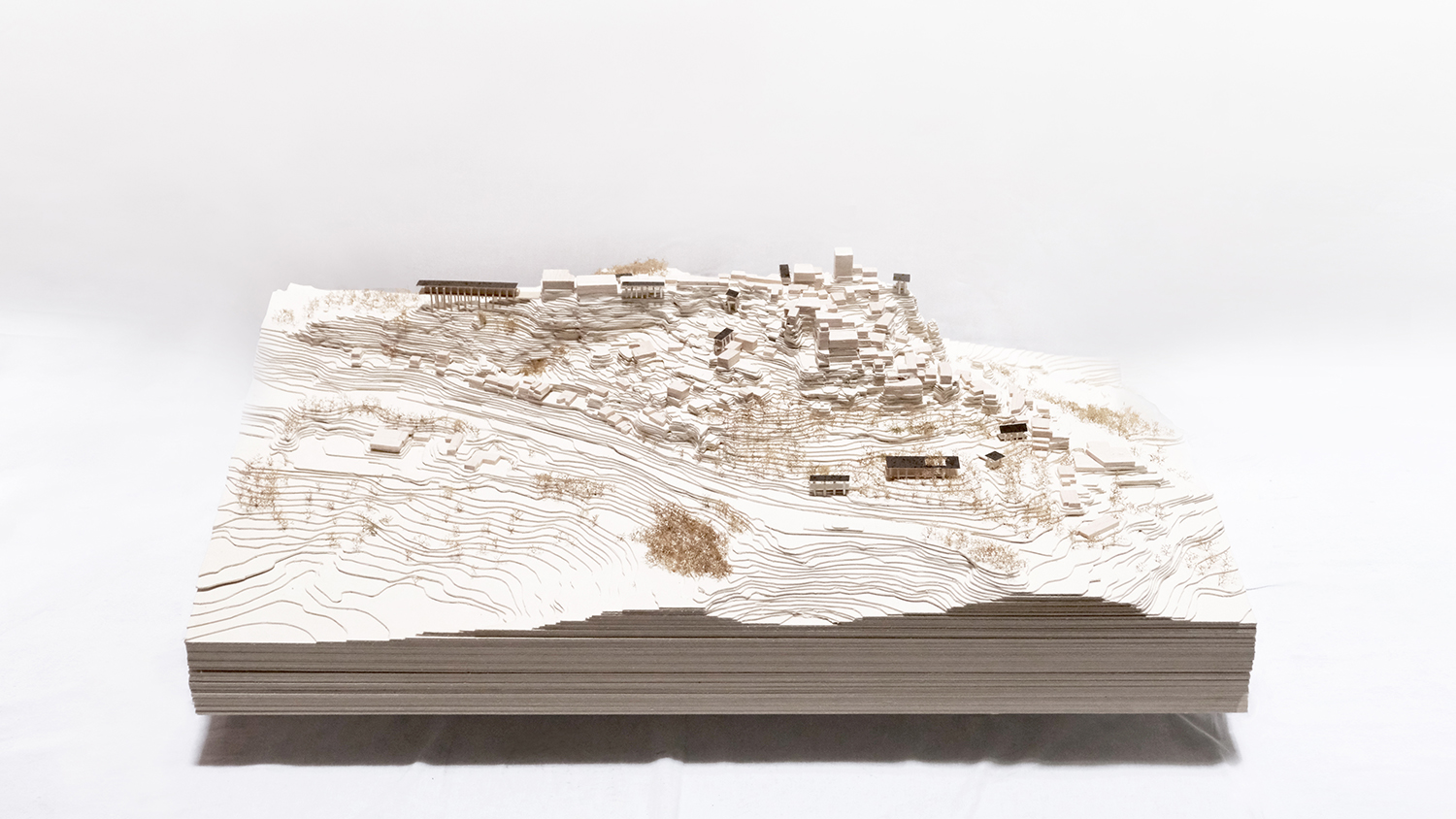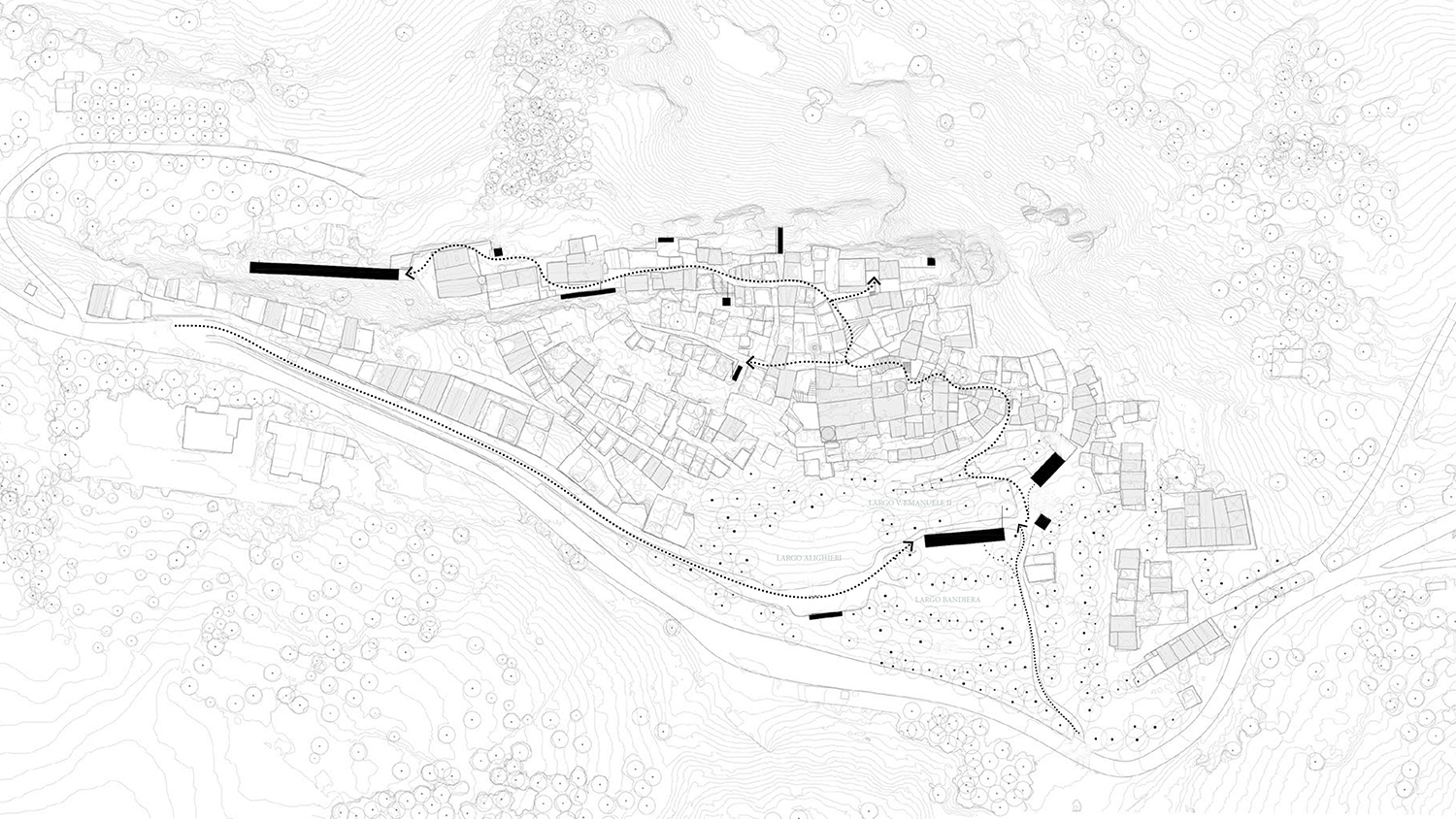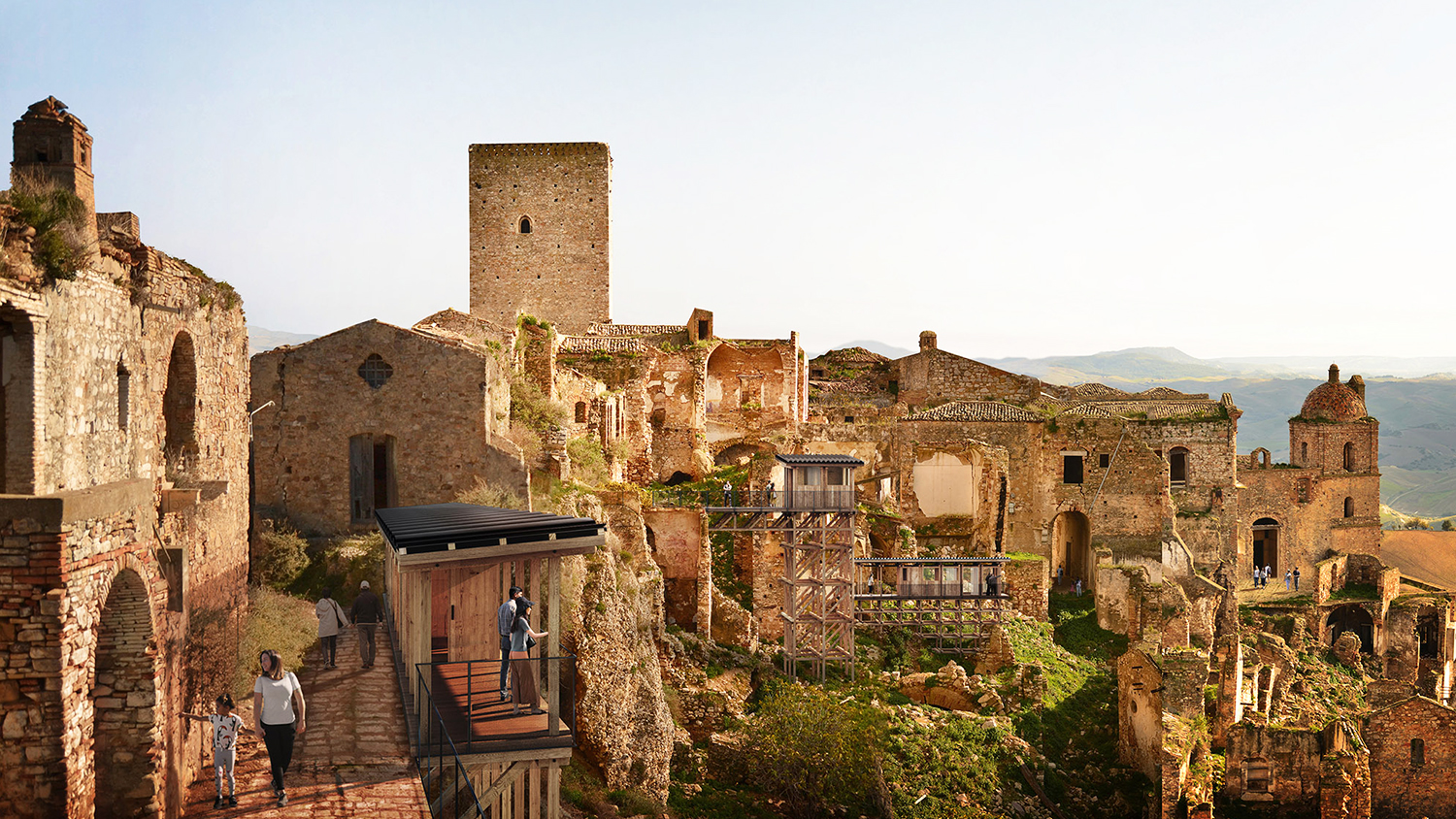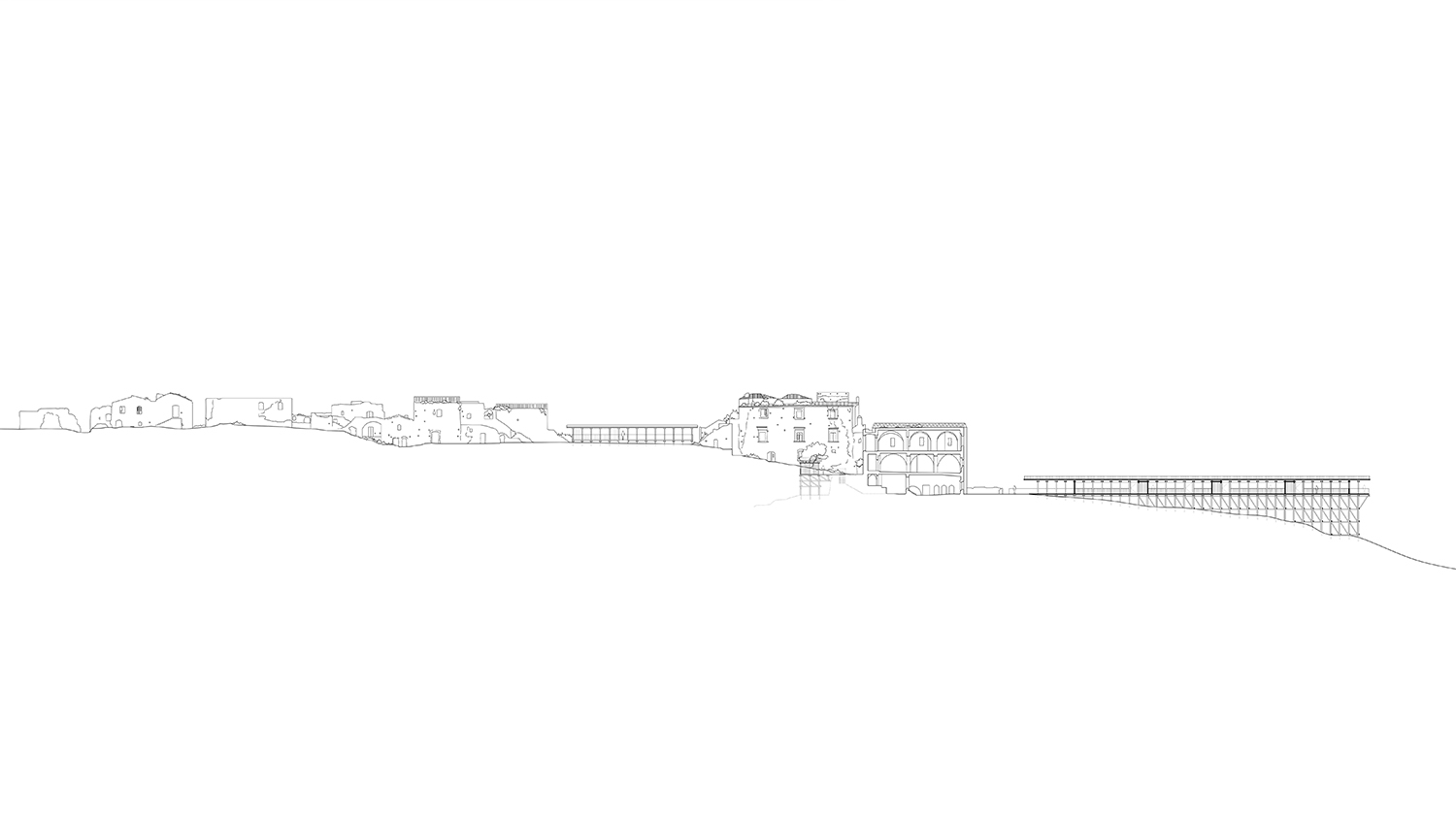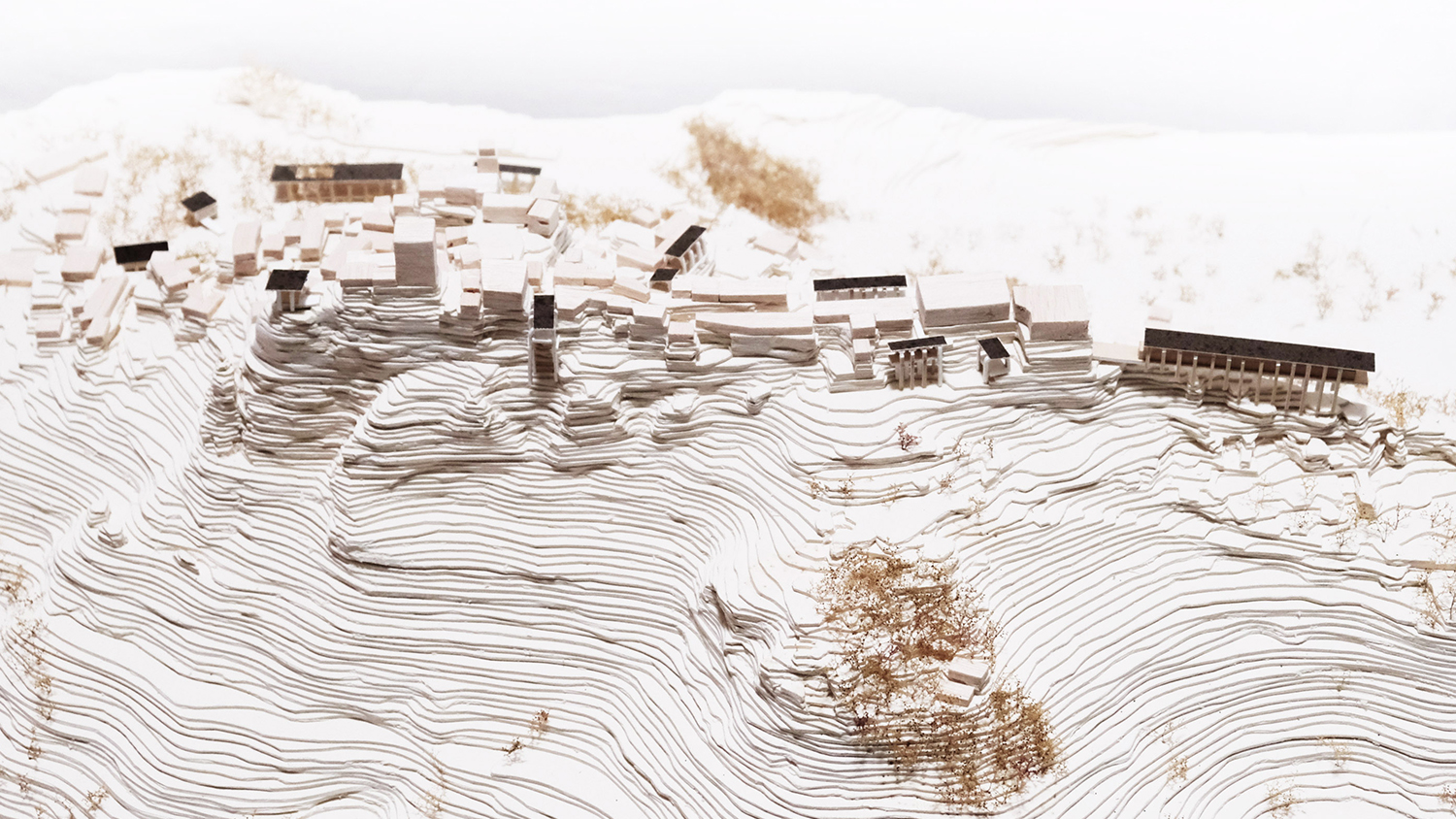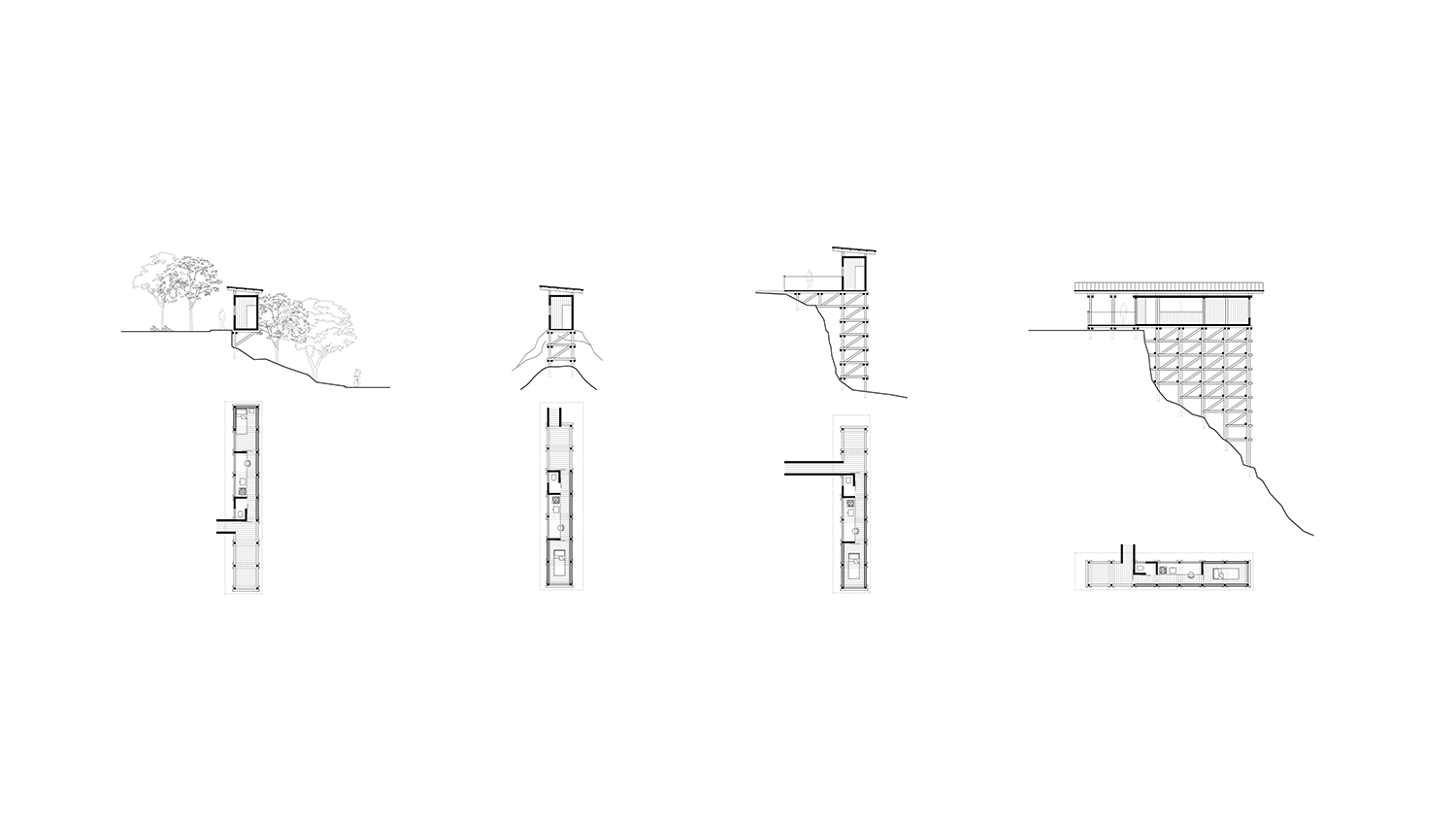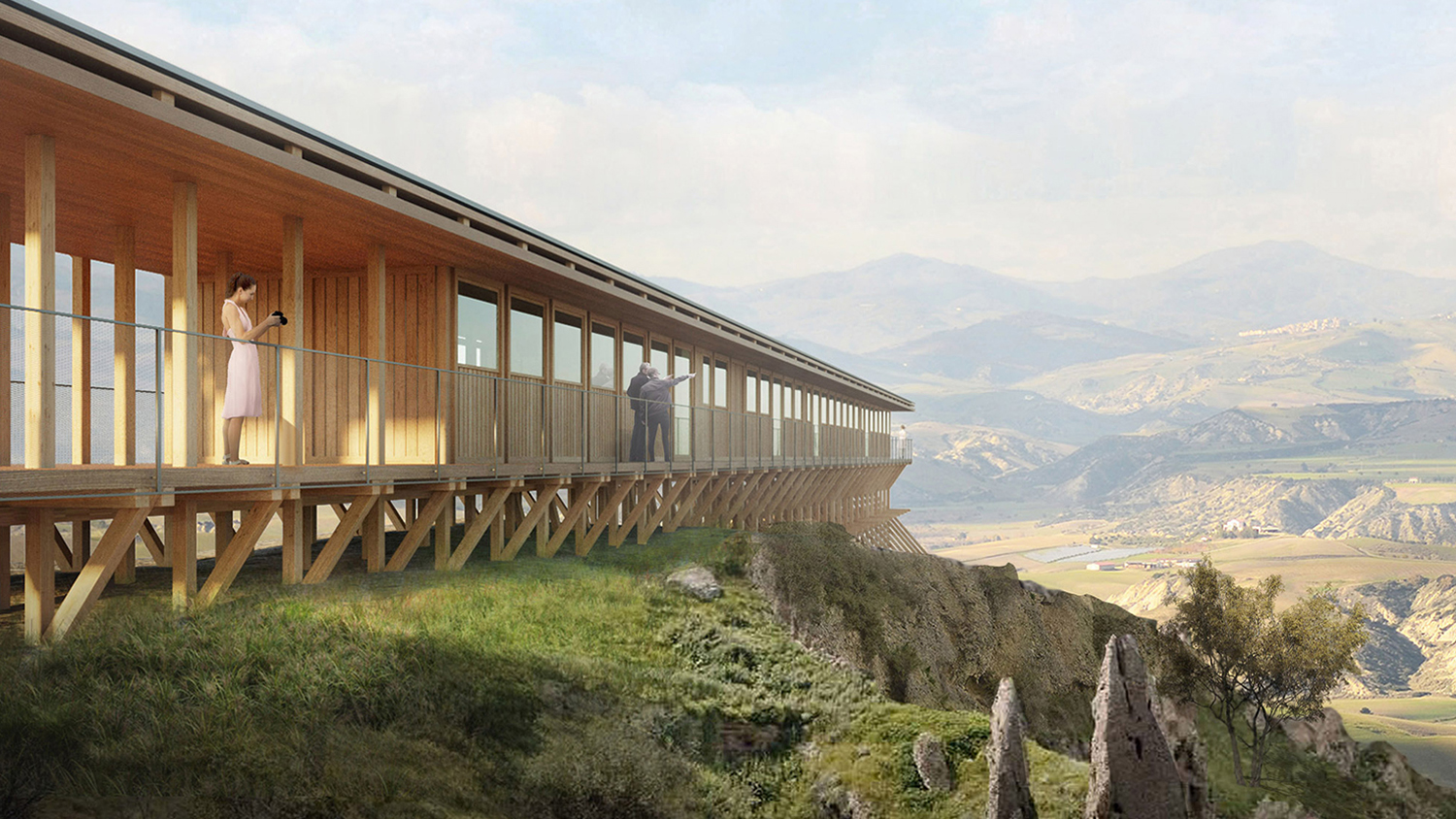2647-PCA-IT-2020
Client: Young Architects Competitions
Status: Competition (2020)
Clasification: 3 prize
Location: Craco, Italy
Coordinates: 40.377948, 16.440554
Climate: Mediterranean, Temperate
Material: Wood
Environments: Mountain, Old town
Visualizer: Play-Time architectonic images
Scale: 300 ㎡ Small
Types: Cultural, Cultural center, Intervention, Landscape
Not far from the most famous city of Matera, perched on a landscape of white dunes, in the heart of Basilicata, lies Craco.
Currently a ghost town, the ancient “Monte d’Oro” was completely abandoned following the disastrous landslide of 1963 when many buildings were damaged and about half of the village was completely demolished.
The small medieval town was built starting from a rocky spur emerging from the clayey soils covered with layers of sand that characterize the Lucanian landscape generating the natural sculptural forms commonly known as “Calanchi”. It is precisely along this spur that the most representative buildings have resisted: the Norman Tower, the Church, Palazzo Grossi, a series of residential units and Palazzo Carbone. The rest of the city, founded on clay, has been reduced to a pile of rubble, whose image, however, has remained etched in the historical memory of the inhabitants and of the place itself, physical evidence of a past that will not be easily forgotten.
It is precisely from this “void” that the project tries to pick up the story.
At the entrance of the city, today an undefined space without dimensional references, but in the past occupied by the important Largo Alfieri followed by Largo V. Emanuele and Largo Bandiera, a “Garden of memory” ideally reconstructs the dimensions of the squares lost giving a new entrance to the village with resting points and a water source between the trees.
The planting of greenery in this area contributes to the natural consolidation of the slope, greatly reducing the risk of further landslides.
Crossing the garden, the visitor reaches the area where the first three volumes of the project have been placed: the Library/Cinemateca, the infopoint and the exhibition space. Here the vast photographic and cinematographic repertoire that links the history of this place to the present day can be enhanced through research, film projections and photographic exhibitions from local and / or international archives. The use of wood in a syntax of punctual and light elements is not the result of a random stylistic choice but a direct consequence of the considerations described above regarding the particular geological conditions of the site. The architectural language adopted is therefore recognizable thanks to it’s technological difference when compared with the mass of the old city built in stone and bricks and, consequently, readable within the context, as a contemporary stratification.
All shelters, inserted in a timely and strategic way, in order to give visitors an exclusive view of the landscape, adopt the same tectonic language and becomes part of the current visit route. The experience culminates and ends on the rocky ridge that descends steeply on the N-O side of the old city. Here, a linear wooden structure houses the rooms, where visitors are given the opportunity to stay for more than one night, and a small restaurant which opens three of its sides to the landscape. The architectural design is in continuity with the morphological structure of the slope and integrates the volume conceiving it as a conclusion of the urban form.
They look like temporary structures, scaffoldings waiting for restoration works, sometimes clinging to the rocks, other times suspended over the landscape.
